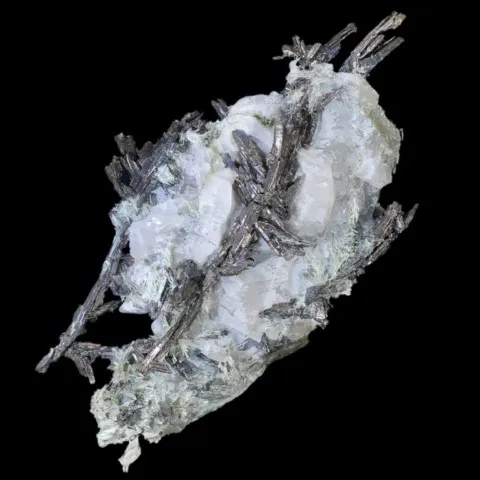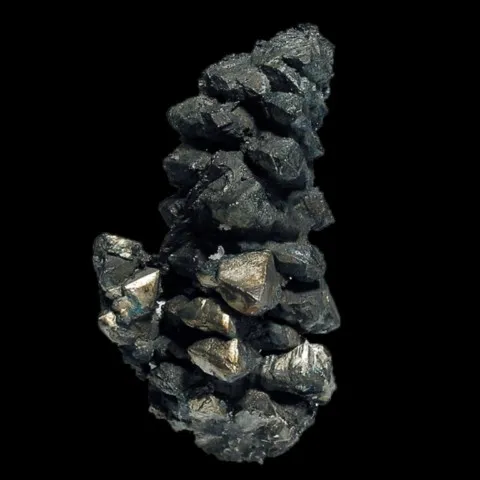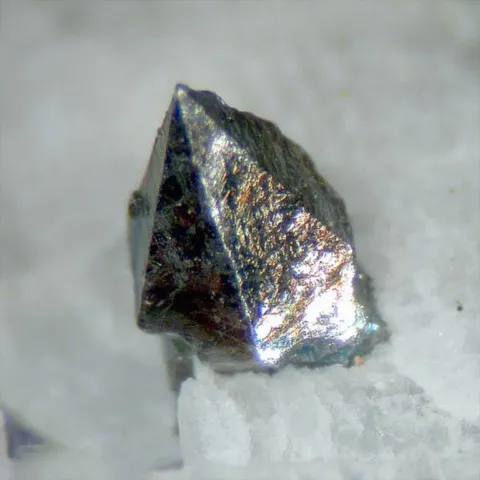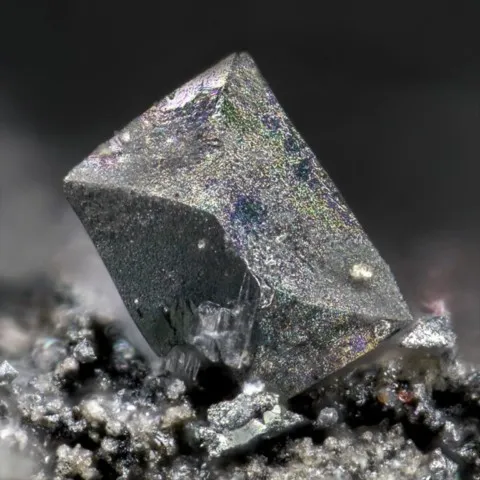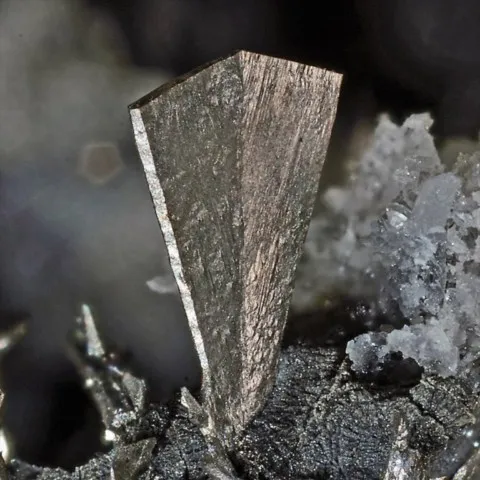DYSCRASITE
Class : Sulfides and sulfosalts
Subclass : Antimonides
Crystal system : Orthorhombic
Chemistry : Ag3Sb
Rarity : Rare
Dyscrasite is a rare mineral from silver-bearing hydrothermal veins. Its name comes from the Greek duskrasia (bad mixture), in allusion to the presence of antimony in this silver ore. It occurs in prismatic, pyramidal or pseudo-octahedral crystals that can reach 5 cm. Dyscrasite is a fairly rare component of silver veins, but can still constitute an occasional silver ore.
Main photo : Dyscrasite from Bouismas Mine, Bou Azzer, Morocco © Louis Verschuren
Dyscrasite in the World
Twinning
Twins are known on {110} which produces pseudo-hexagonal or V shapes.
Fakes and treatments
No fake listed for this mineral species.
Hardness : 3.5 to 4
Density : 9.71
Fracture : Irregular
Streak : Silver-white
TP : Opaque
RI : -
Birefringence : -
Optical character : -
Pleochroism : None
Fluorescence : None
Solubility : Nitric acid
Magnetism : None
Radioactivity : None

